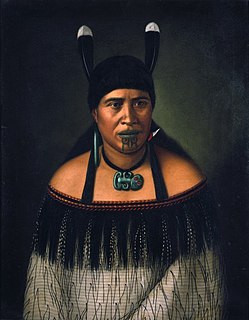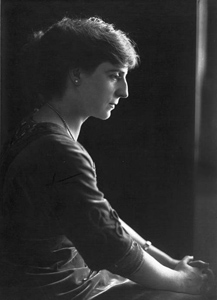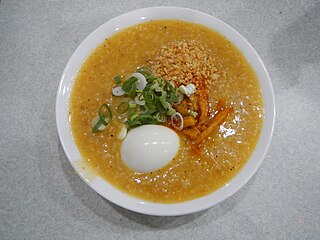
Offal, also called variety meats, pluck or organ meats, refers to the internal organs and entrails of a butchered animal. The word does not refer to a particular list of edible organs, which varies by culture and region, but includes most internal organs excluding muscle and bone. As an English mass noun, the term "offal" has no plural form. Some cultures strongly consider offal as food to be taboo, while others use it as everyday food, or in delicacies.
Certain offal dishes—including foie gras, pâté and sweetbread—are considered gourmet food in international cuisine. Others remain part of traditional regional cuisine and may be consumed especially in connection with holidays. This includes Scottish haggis, Jewish chopped liver, U.S. chitterlings, Mexican menudo as well as many other dishes. Intestines are traditionally used as casing for sausages.

Menudo, also known as pancita or mole de panza, is a traditional Mexican soup, made with cow's stomach (tripe) in broth with a red chili pepper base. It shares a name with a stew from the Philippines made with pork and pork liver.

Tripe soup or tripe stew is a soup or stew made with tripe.
Recorded Music NZ is a non-profit trade association of record producers, distributors and recording artists who sell music in New Zealand. Membership of Recorded Music NZ is open to any recorded music rights owner operating in New Zealand, inclusive of major labels, independent labels and self-released artists. Recorded Music NZ has over 2000 rights holders.
Drisheen is a type of blood pudding made in Ireland. It is distinguished from other forms of Irish black pudding by having a gelatinous consistency. It is made from a mixture of cow's, pig's and/or sheep's blood, milk, salt and fat which is boiled and sieved and finally cooked using the main intestine of an animal as the sausage skin. The sausage may be flavoured with herbs, such as tansy. The recipe for drisheen varies widely from place to place and it also differs depending on the time of year. Drisheen is a cooked product but it usually requires further preparation before eating. How this is done varies widely from place to place.

Sopa de mondongo is a soup made from diced tripe slow-cooked with vegetables such as bell peppers, onions, carrots, cabbage, celery, tomatoes, cilantro (coriander), garlic or root vegetables. The dish is generally prepared in former Spanish colonies in Latin America and the Caribbean, and in the Philippines.

New Zealand is a sovereign island country in the southwestern Pacific Ocean. The country geographically comprises two main landmasses—the North Island, and the South Island —and around 600 smaller islands. New Zealand is situated some 2,000 kilometres (1,200 mi) east of Australia across the Tasman Sea and roughly 1,000 kilometres (600 mi) south of the Pacific island areas of New Caledonia, Fiji, and Tonga. Because of its remoteness, it was one of the last lands to be settled by humans. During its long period of isolation, New Zealand developed a distinct biodiversity of animal, fungal, and plant life. The country's varied topography and its sharp mountain peaks, such as the Southern Alps, owe much to the tectonic uplift of land and volcanic eruptions. New Zealand's capital city is Wellington, while its most populous city is Auckland.
Countrywide Banking Corporation limited was a retail bank operating throughout New Zealand until 1998 when it was acquired by the National Bank of New Zealand. It was created from Countrywide Building Society, which itself emerged from the original Auckland Co-operative Terminating Building Society created in March 1897.

James McLauchlan Nairn (1859–1904) was a Glasgow-born painter who strongly influenced New Zealand painting in the late 19th century. He believed in en plein air or painting outdoors.

New Zealand art consists of the visual and plastic arts originating from New Zealand. It comes from different traditions: indigenous Māori art, that of the early European settlers, and later immigrants from Pacific, Asian, and European countries. Owing to New Zealand's geographic isolation, in the past many artists had to leave home in order to make a living. The visual arts flourished in the latter decades of the 20th century as many New Zealanders became more culturally sophisticated.

Edward Richardson was a New Zealand civil and mechanical engineer, and Member of Parliament. Born in England, he emigrated to Australia and continued there as a railway engineer. Having become a partner in a contracting firm, a large project caused him to move to Christchurch in New Zealand, in which country he lived for the rest of his life.

Maud Winifred Kimbell Sherwood (1880–1956) was a notable New Zealand artist, exhibiting at the New Zealand Academy of Fine Arts, the Royal Academy of Arts, London and the Paris Salon.

John William Peter Newman is an English musician, singer, songwriter and record producer. He is best known for the track "Love Me Again" which peaked at number one on the UK Singles Chart in July 2013 as well as co-writing and singing on Rudimental's 2012 singles "Feel the Love" and "Not Giving In", which peaked at number one and number 14 on the chart, respectively. In 2014, he featured in the Calvin Harris single "Blame" which topped the UK charts.
The Official New Zealand Music Chart is the weekly New Zealand top 40 singles and albums charts, issued weekly by Recorded Music NZ. The Music Chart also includes the top-20 New Zealand artist singles and albums and top 10 compilation albums. All charts are compiled from data of both physical and digital sales from music retailers in New Zealand.
Robert John Rostrevor "Robbie" Tripe was a New Zealand stage, television and movie actor.

Tripe chorba is a chorba (soup) made with tripe. It is widely considered to be a hangover remedy.

Goto, also known as arroz caldo con goto, is a Filipino rice and beef tripe gruel cooked with ginger and garnished with toasted garlic, scallions, black pepper, and chicharon. It is usually served with calamansi, soy sauce, or fish sauce (patis) as condiments, as well as a hard-boiled egg. It is a type of lugaw.















